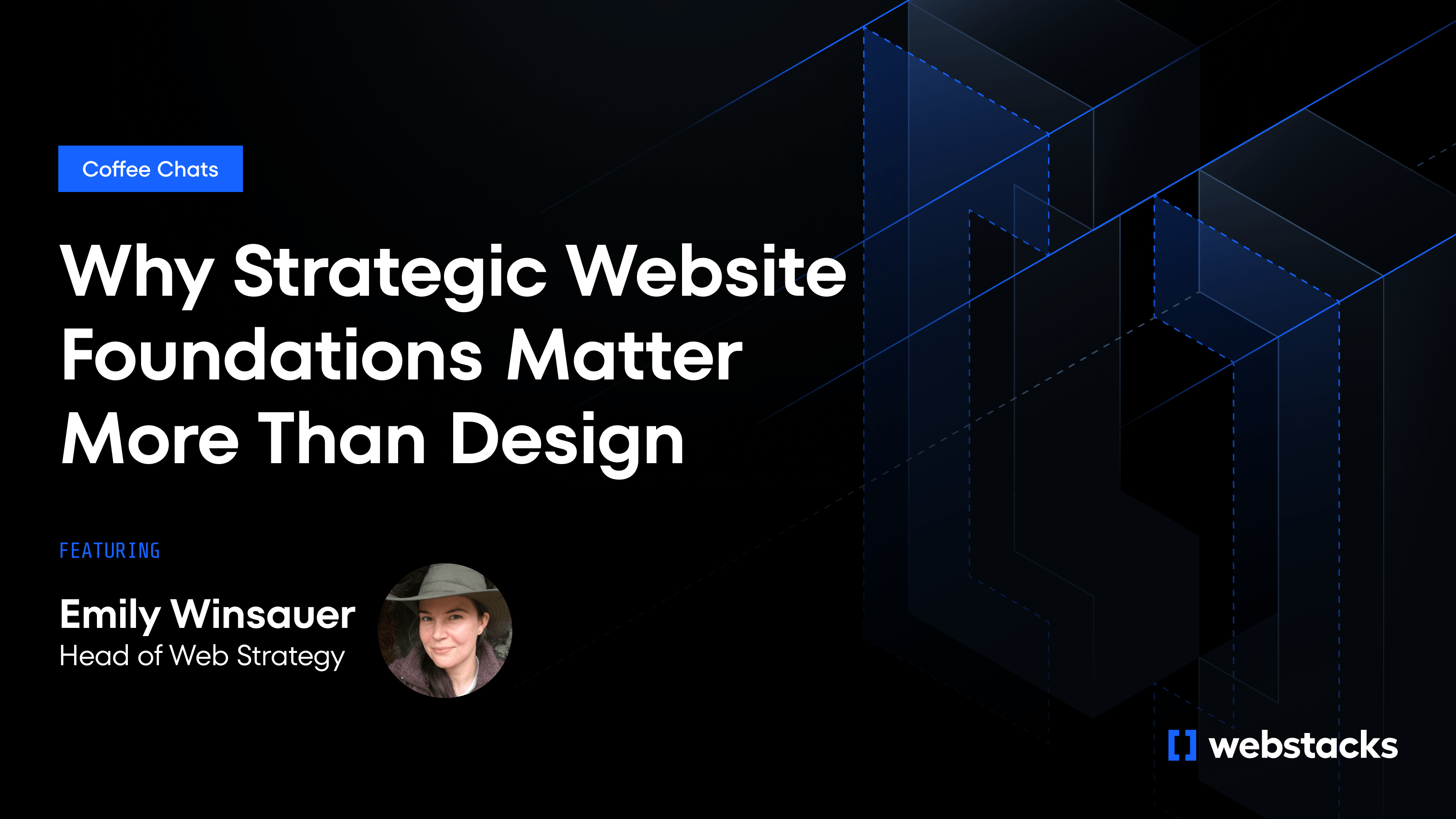As B2B companies mature, they must deliver consistent brand experiences, campaigns, and localized content across multiple regions. But while the opportunity is global, the execution is anything but one-size-fits-all.
Building an international B2B marketing strategy means navigating complex stakeholder environments, segmented buyer personas, localization challenges, and tech stack decisions.
For B2B leaders, the question isn’t “should we go global?”. It’s “how do we scale without compromising performance or brand integrity?”
This guide provides actionable tips to help enterprise teams build and operationalize a global marketing strategy.

1. Start with a Global-First Marketing Foundation
An international marketing strategy can’t be an afterthought.
If you’re planning to enter multiple markets, your marketing infrastructure (especially your website) needs to be built for scale from the beginning.
You need to think beyond campaign ideas and consider the architecture, workflows, and governance models that support long-term global growth.
Too often, enterprise marketing teams find themselves rebuilding or replatforming their website once they expand abroad. This happens due to legacy systems that aren’t equipped to handle localization or faster performance.
A global-first website foundation starts with:
- A composable CMS that supports localization, content versioning, and reusable components
- Scalable design systems that allow for visual consistency across regions and support language and UX differences
- Page templates that work for multiple personas, regions, and use cases without requiring dev intervention
At Webstacks, we approach every site and campaign with this flexibility in mind. We build multi-market support directly into the CMS and design atomic components that allow teams to localize copy to eliminate barriers to global growth.
A global marketing strategy also needs repeatable systems for campaign execution. It starts with clear guardrails: shared campaign frameworks, naming conventions, and creative guidelines that regional teams can actually use.
Set up a central asset library with modular content such as headlines, CTAs, social copy, and ad variants that teams can adapt quickly.
You can use tools like Asana to track campaign timelines across markets in one place. Standardize how briefs are submitted and how feedback loops work between global and regional teams.
And make sure performance reporting isn’t just a dashboard. Instead, build processes that help teams actually use the data to improve their next launch.
2. Align Global Stakeholders Around Unified Objectives
When international expansion accelerates, so does organizational complexity.
Different regions often have their own marketing leads, sales priorities, legal requirements, and cultural nuances. Without early alignment, enterprise teams risk fragmented messaging and slow execution.
To avoid these problems, align before the first campaign or regional rollout.
Bring global stakeholders into the strategy phase, not just execution. Clarify the core business goals, define what localization means for your organization, and set expectations around roles, workflows, and ownership.
A few ways to ensure this alignment sticks:
- Host cross-regional strategy sessions to establish a shared understanding of audience personas, value propositions, and KPIs
- Create source-of-truth documentation (from messaging frameworks to component libraries) that local teams can adapt
- Use parallel workstreams to keep global efforts moving, even if one region faces delays
Unified objectives create a consistent brand experience across markets and give local teams the clarity and flexibility they need to execute.
3. Build Modular Systems for Multi-Region Content Delivery
Scaling content for global markets doesn’t mean duplicating everything. You can build a system that supports variation, and modular systems make this possible.
Instead of designing custom pages for every market, modular content is built from reusable components, such as hero images and CTAs. These can be configured for different regions and launched without developer involvement.
When building a modular system, you also need:
- Governance rules that keep design consistent across regions
- A flexible CMS that allows marketers to edit content independently, with version control and role-based permissions. Webstacks recommends using a headless CMS.
This kind of system ensures teams don’t start from scratch every time they enter a new market and helps avoid “template fatigue” while scaling.
4. Customize Messaging Based on Regional Buyer Personas
International B2B marketing demands a deep understanding of regional personas, and a strategy flexible enough to adapt messaging.
For example, a developer persona in North America may prioritize API flexibility and documentation, while their counterpart in Europe could be more focused on compliance and data privacy.
These differences shape how you speak to your audience. It also impacts the content you create, its distribution, and the user journey.
To personalize messaging across regions:
- Map buyer personas for each region, noting differences in pain points, buying stages, and preferred content formats
- Adapt value propositions to reflect regional context such as economic conditions, regulatory environments, or tech maturity
- Use dynamic page templates or region-specific modules that tailor messaging, CTAs, and offers
This is where strong content governance and smart CMS implementation become critical. Webstacks regularly helps enterprise teams implement composable CMS architectures that support flexible content structures and editable content slots.
One example: when we partnered with Snowflake to rebuild Snowflake University, their educational microsite, we created a modular system that made it easier to deliver tailored learning experiences at scale.
The updated architecture supported over 120 new pages under the Learn Center, improved navigation, and made it easier to surface relevant content by user role. The results were a 900% increase in organic traffic and more than 150 new keywords ranking, driven by a smarter content structure that prioritized both usability and flexibility.

5. Choose the Right Tech Stack
Scaling B2B international marketing can become a systems problem. Your tech stack will slow everything down if it can’t support regional teams, workflows, and data integration.
A good tech stack connects your CMS, CRM, marketing automation platform, analytics tools, and translation systems into a setup that’s flexible and connected. Marketers should be able to launch a campaign, pull in the right data, personalize content by region, and measure performance independently.
When evaluating different platforms, here are some capabilities to look for:
- Centralized data with region-level visibility
- Workflow tools that support cross-team collaboration and approvals
- Easy integrations between tools like Salesforce, Marketo, HubSpot, and your CMS
- Support for multi-language content, campaign asset management, and regional tracking
6. Invest in Scalable Localization and Translation Workflows
When you expand internationally, you need to localize the language, tone, regulatory references, visuals, and even content hierarchy on your website.
Many teams start with manual translation and quickly hit a wall due to inconsistent messaging, long review cycles, and version control issues.
A good localization system supports the following:
- Integration with your CMS that allows for real-time syncing between content updates and translation platforms
- Translation memory and glossary tools to support consistent terminology across languages
- Role-based workflows, involving translators, marketers, and regional reviewers
7. Use Data to Continuously Optimize International Campaigns
International B2B marketing requires a granular analytics approach. Knowing what’s working globally is not enough. You need to know where, why, and for whom it’s working.
You should segment reporting by region, persona, and language, so you can isolate performance and diagnose friction points.
Without localized performance insights, enterprise teams risk scaling the wrong tactics or missing optimization opportunities.
Note that going global is an ongoing process of testing, learning, and adapting.
Each region brings its own dynamics: buyer behavior, campaign performance, content preferences, and sales cycles.
8. Launch in Phases
A full-scale international rollout sounds efficient, but it often introduces unnecessary risk. Trying to localize every page, campaign, and asset at once can overwhelm teams. A phased launch strategy offers a smarter, more manageable path to global scale.
Phased rollouts allow enterprise teams to gather feedback, test localized content, and refine their approach before replicating it across additional markets.
They also enable better collaboration between global and regional stakeholders.
To structure a phased approach:
- Start with priority regions and core content, such as homepage, top-performing solutions pages, and primary CTAs
- Keep navigation and brand elements unified, even as content is localized, avoiding fragmented UX
- Use iterative rollouts to introduce long-tail content, microsites, or campaign assets over time
This phased methodology aligns with Webstacks’ own approach to large enterprise web builds. For our clients, we recommend launching the homepage and P1 pages first, then layering in region-specific pages, blogs, and legal content once foundational systems are stable.
Go Global Without Going Generic
A successful international B2B marketing strategy involves systems, structure, and strategic alignment. From modular content delivery to scalable tech stacks, the best global teams plan for complexity.
Enterprise companies that succeed internationally don’t try to do everything at once. They build flexible foundations and invest in tools that allow local teams to move fast while staying on brand.
At Webstacks, we help enterprise marketing leaders implement the systems and strategies that make global growth sustainable, including CMS architecture, localization workflows, and scalable design systems. If you’re ready to expand internationally with confidence, we’re here to guide the process.




